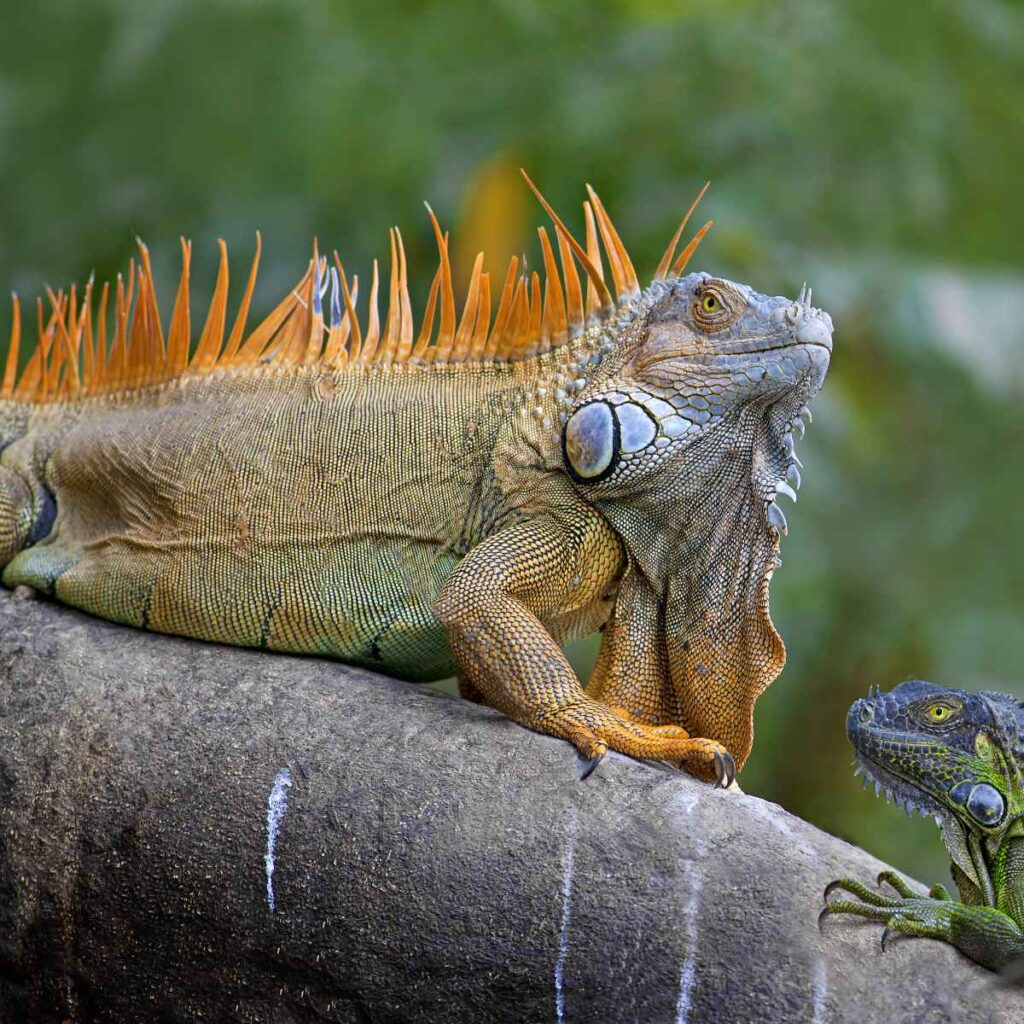Last Reviewed and Updated on July 27, 2022
While chameleons are the most known group of lizards that can change colors, they are not the only ones. Many different lizard species have the ability to change colors. But do iguanas change colors? Can iguanas camouflage? Let’s find out!

What are Iguanas?
Iguanas are herbivorous (plant-eating) lizards native to tropical areas of South and Central America, Mexico, and the Caribbean. They are fairly popular as pet lizards.
There are two species of iguana, the green iguana and the Leaser Antillean iguana.
Although these lizards are quite big, ranging from 5 to 6 feet / 1.5 to 1.8 in length with their tail included, they can be quite hard to spot in their natural environment as their colors make them easily blend with their surroundings.
Like most lizards and reptiles, iguanas lay eggs.
Be sure to read: interesting facts about iguanas
Do iguanas change colors? Do they camouflage?
There are instances where iguanas will change their colors, but not in a way a chameleon does. Iguanas can’t change their color at will, and they don’t change color to camouflage.
An iguana can change its color slightly as a reflection of the environmental conditions. For example, their skin can become darker if they are cold as darker skin improves the absorption of heat. Unlike chameleons, these color changes do not happen fast.
Iguanas may also change their color during the breeding season; their skin may become a more orange or red shade.
The shade of their skin color can also change as they age as well as depending on their health. A sick iguana may start having duller skin.
The skin of an iguana isn’t like the skin of a chameleon and other color-changing lizards. Chameleons have a large number of cells called chromatophores in their skin, cells that produce and enable color change, while iguanas do not.
